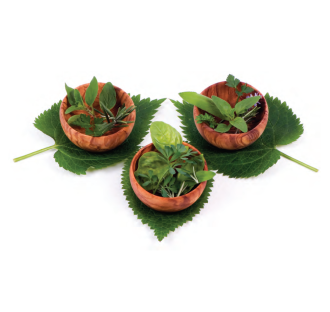This article appeared in the Summer 2007 issue of Texoma Living!.
If you love flavor, you love herbs—the big, bright herbs that throw themselves into the pan headlong, commandeering the chicken or roast, and the more delicate herbs that mince or sidle their way into salads and leave a dinner guest sighing, “Was that a hint of tarragon in the dressing? But it seemed so impossibly fresh.”
It was fresh. You just cut it this morning in your garden. And it’s not tarragon; it’s a native herb called Tagetes lucida that is tough and beautiful and lends its grace to both garden and table, almost without effort from either gardener or cook. It’s sold in nurseries as mint marigold or Texas tarragon.
Thyme, basil, chives, rosemary, dill—many culinary herbs love the Texoma climate. They bask in the long summer days, the mild winters, and the admiration of the cooks who adore them. Disease free, bug free, drought tolerant, and delicious, herbs are the perfect addition to any sunny patio or garden. Why not plant some and see?
Herbs are easy enough to grow, but timing is everything. Many have a brief window for optimum planting. Sow dill or cilantro too late in the spring, and they’ll go to seed and die before you’ve had your fill of their tasty foliage. For the best crops of such cool-weather lovers, plant seeds in early fall or late winter. Basil, on the other hand, is never happy when the temperature dips into the 40s. Set out basil plants in the cold soil of early spring, and they will pout and languish and often die. But herbs that are perennial in our climate, like sage, rosemary, chives and, oregano— and that includes our Tagetes—can be planted from nursery containers at any time.
Except for plants in the mint family, most herbs are fussy about the amount of moisture that collects around their roots. If your soil is black gumbo, like mine, you can create a special environment for your sages, lavenders, and thymes, in either raised beds or containers, with soils that won’t hold moisture around the plants’ roots.
Besides their value in the kitchen, herbs often provide extra service in the landscape. Rosemary grows quickly into an evergreen, free-form shrub in either full sun or part shade. It makes a lovely specimen in a lawn or ornamental bed and sports small blue flowers in late winter. Chives produce tons of early-spring blossoms to brighten flowerbeds. Thyme creeps among stepping stones in many a Texoma yard.
And one last thing about herbs—they attract butterflies, both larval and adult forms. If dill or fennel foliage disappears, butterfly caterpillars are eating it. (You may want to plant enough to share.) And in November, when the mint marigold is blooming, you may not even remember its gourmet taste, because you will be entranced to see it covered with monarch butterflies, stopping off to sip at its sweet yellow flowers on their way to Mexico for winter. Monarchs, it seems, love herbs, too.

